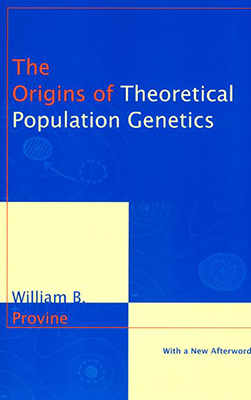The Origins of Theoretical Population Genetics
“The Origins of Theoretical Population Genetics” by William B. Provine is a seminal work that examines the development of the field of population genetics and its foundational concepts. Here’s a summary:
Introduction to Population Genetics: Provine begins by introducing the field of population genetics, which explores how genetic variation within populations changes over time in response to evolutionary forces such as natural selection, genetic drift, mutation, and gene flow.
Early Pioneers: Provine discusses the contributions of early pioneers in the field of population genetics, including Ronald Fisher, J.B.S. Haldane, and Sewall Wright. He examines their groundbreaking work in developing mathematical models and theoretical frameworks to explain the patterns of genetic variation observed in natural populations.
The Modern Synthesis: Provine explores the integration of population genetics with other areas of biology, such as evolutionary biology, ecology, and paleontology, during the mid-20th century. This integration, known as the Modern Synthesis, provided a comprehensive framework for understanding the process of evolution.
Key Concepts: Provine examines key concepts in population genetics, such as the Hardy-Weinberg equilibrium, which describes the relationship between allele frequencies and genotype frequencies in a population that is not evolving. He also discusses genetic drift, natural selection, and gene flow, and their roles in shaping genetic diversity within and between populations.
Controversies and Debates: Provine discusses controversies and debates within the field of population genetics, including disputes over the relative importance of natural selection versus genetic drift in driving evolutionary change. He also examines debates over the role of random mutation in generating genetic variation.
Applications and Future Directions: Provine explores the practical applications of population genetics in fields such as medicine, agriculture, and conservation biology. He also considers future directions for research in population genetics, including the integration of genomic data and the development of new mathematical models and computational techniques.
Legacy and Impact: Provine concludes by reflecting on the legacy and impact of theoretical population genetics on the broader field of biology. He argues that population genetics has revolutionized our understanding of evolution and provided a powerful framework for studying the genetic basis of complex traits and diseases.
Overall, “The Origins of Theoretical Population Genetics” provides a comprehensive overview of the development of population genetics as a field of study. Provine’s insightful analysis and historical perspective make the book an invaluable resource for students and researchers interested in the history and theoretical foundations of evolutionary biology.

